تلعب كسارات البلاستيك دورًا محوريًا في إعادة التدوير الصناعي، وإدارة النفايات، ومعالجة المواد. تُجزّئ هذه الآلات النفايات البلاستيكية إلى قطع أصغر يسهل التعامل معها، مما يُتيح إعادة تدويرها واستخدامها بكفاءة. مع ذلك، يعتمد أداء كسارة البلاستيك بشكل كبير على حالة شفراتها.
الشفرات الباهتة أو التالفة تُقلل من كفاءة القطع، وتزيد من استهلاك الطاقة، وقد تُسبب أعطالًا في الآلة. قد تؤدي الشفرة غير المُصانة جيدًا إلى تقطيع غير مُنتظم، وارتفاع درجة الحرارة، وتآكل غير مُبرر لمكونات الآلة الأخرى. في الحالات القصوى، قد تُؤدي السكاكين المُهترئة إلى توقف مُكلف للآلة وإصلاحات مُكلفة.
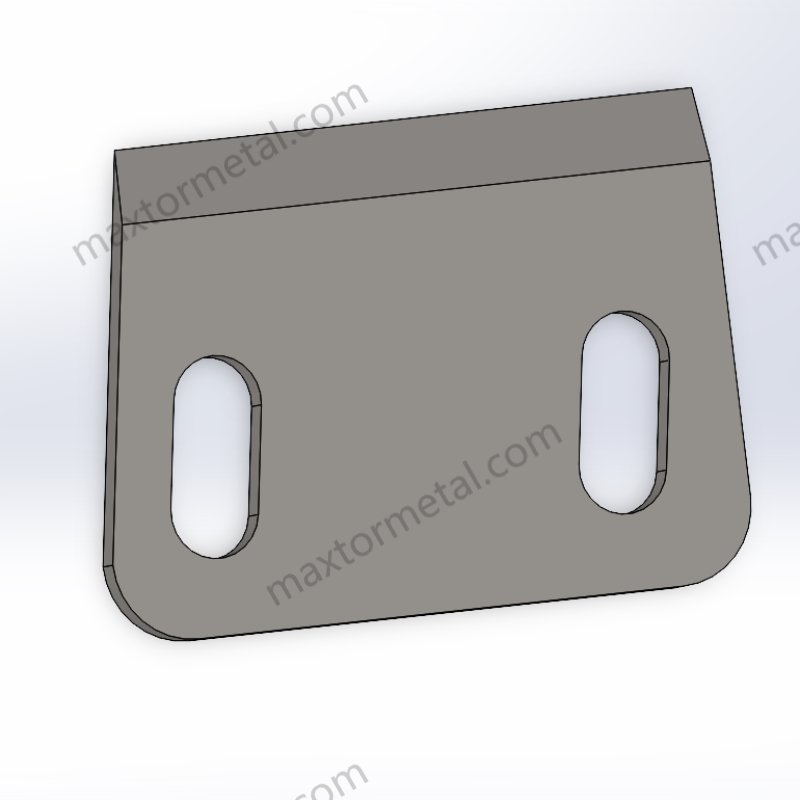
فهم متى وكيف يتم الاستبدال شفرات كسارة البلاستيك يُعدّ هذا الأمر ضروريًا للحفاظ على الإنتاجية وتقليل تكاليف التشغيل. سيشرح لك هذا الدليل أنواع الشفرات، وعلامات التآكل، وعملية الاستبدال خطوة بخطوة.
نبذة عن نانجينغ Metal
بصفتها شركة رائدة في صناعة السكاكين والشفرات الصناعية، تُنتج شركة نانجينغ Metal حلول تقطيع عالية الجودة منذ 18 عامًا. يتخصص فريقنا في تصميم وتصنيع شفرات مخصصة لتلبية الاحتياجات الفريدة لمختلف الصناعات.
1. أنواع شفرات سحق البلاستيك
يُعد اختيار نوع الشفرة المناسب أمرًا أساسيًا لضمان كفاءة التقطيع، وإطالة عمر الآلة، وخفض تكاليف التشغيل. نستعرض أدناه الفئات الرئيسية الثلاث لشفرات سحق البلاستيك بمزيد من التفصيل، بما في ذلك تركيبها المادي، وخصائصها، وتطبيقاتها المثالية.
1.1 شفرات من الفولاذ عالي السرعة (HSS)
تكوين المواد: تُصنع شفرات HSS من الفولاذ عالي الكربون مع عناصر السبائك مثل التنغستن والموليبدينوم والفاناديوم والكروم لتعزيز الصلابة ومقاومة الحرارة.
الخصائص والمزايا:
✅ صلابة ممتازة، مما يجعلها مقاومة للتقطيع وقوى التأثير.
✅ مقاومة عالية للتآكل، مما يسمح لها بالحفاظ على حدتها لفترات أطول.
✅ مناسبة لتطبيقات التقطيع عالية السرعة بسبب خصائصها المقاومة للحرارة.
أفضل استخدام ل:
- المواد البلاستيكية الصلبة والصلبة، مثل ABS (أكريلونيتريل بوتادين ستايرين) والبولي كربونات (PC).
- عمليات التقطيع ذات الحجم الكبير والتي تتطلب حدة طويلة الأمد.
1.2 شفرات من سبائك الفولاذ
تكوين المواد: يتم تصنيع الشفرات المصنوعة من السبائك باستخدام الفولاذ عالي الكربون المخلوط بعناصر إضافية مثل النيكل والمنجنيز والكروم لتحسين المتانة.
الخصائص والمزايا:
✅ توازن بين القوة والصلابة، مما يجعلها متعددة الاستخدامات.
✅ مقاومة جيدة للتآكل، على الرغم من أنها أقل قليلاً من شفرات الكربيد.
✅ أكثر فعالية من حيث التكلفة من الكربيد مع توفير متانة فائقة مقارنة بشفرات الفولاذ القياسية.
أفضل استخدام ل:
- التقطيع المتوسط للورق بولي فينيل كلوريد (PVC) والبولي إيثيلين عالي الكثافة (HDPE).
- التطبيقات العامة التي تتطلب أداءً موثوقًا به وبأسعار معقولة.
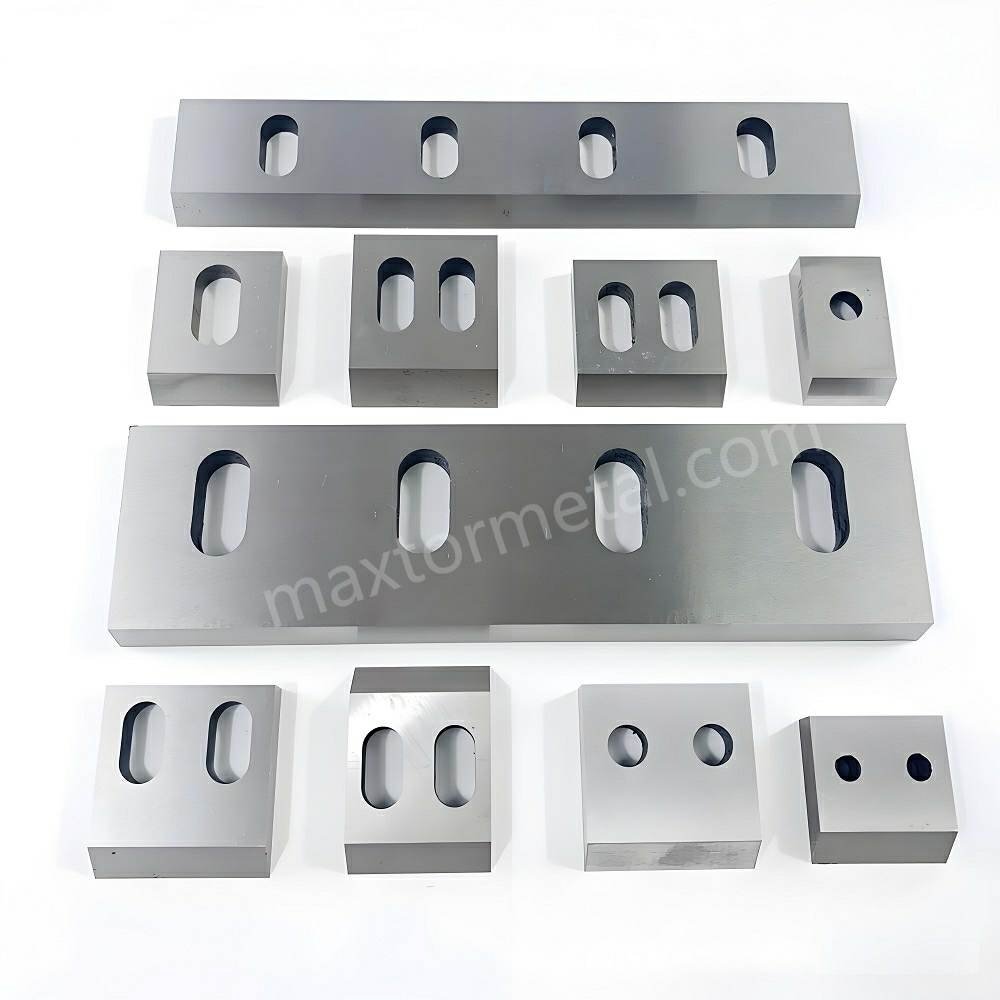
1.3 شفرات كربيد
تكوين المواد: تتميز هذه الشفرات بحافة قطع مصنوعة من كربيد التنجستن ملتصقة بنواة فولاذية، مما يوفر صلابة شديدة ومقاومة عالية للتآكل.
الخصائص والمزايا:
✅ مقاومة عالية جدًا للتآكل، مما يطيل عمر الشفرة بشكل كبير.
✅ صلابة استثنائية، مما يقلل الحاجة إلى الشحذ المتكرر.
✅ تكلفة أولية أعلى ولكن نفقات الاستبدال على المدى الطويل أقل.
أفضل استخدام ل:
- المواد البلاستيكية الهندسية والمواد الكاشطة مثل البوليمرات المقواة بالألياف (FRPs).
- التطبيقات الصناعية الثقيلة التي تتطلب قطعًا دقيقًا ووقت تعطل ضئيلًا.
1.4 كيفية اختيار الشفرة المناسبة
يعتمد اختيار الشفرة المناسبة على عدة عوامل:
| عامل | أفضل نوع شفرة | مثال للتطبيق |
| صلابة المادة | HSS أو الكربيد | البلاستيك المتين (PC، PET، ABS) |
| مقاومة التآكل مطلوبة | كربيد | البلاستيك عالي التآكل (FRPs) |
| اعتبارات الميزانية | خليط معدني | تقطيع البلاستيك متوسط التحمل |
| سرعة القطع | الأحرار | خطوط التقطيع عالية السرعة |
2. كيف تعمل شفرات الكسارة
إن فهم آليات شفرات الكسارة أمر ضروري لتحسين أداء الماكينة وتجنب التآكل المبكر.
2.1 آلية قطع شفرات كسارة البلاستيك
تعمل آلات تقطيع البلاستيك باستخدام دوارة و شفرات ثابتة تعمل معًا لتفكيك المواد البلاستيكية إلى قطع أصغر. تتم عملية القطع من خلال:
- قص - القوة الأساسية المطبقة، حيث تقوم السكاكين الدوارة بدفع البلاستيك ضد السكاكين الثابتة لإنشاء قطع نظيفة.
- تمزق - بالنسبة للبلاستيك الأكثر ليونة، تخلق الشفرات شقوقًا صغيرة تتمدد تحت الضغط الميكانيكي، مما يؤدي إلى تفتيت البلاستيك.
- ضغط - تستخدم بعض آلات التقطيع قوة الضغط قبل القطع لزيادة الكفاءة.
2.2 العوامل الرئيسية المؤثرة على كفاءة التقطيع
يتأثر أداء الكسارة بشكل مباشر بالعوامل التالية المتعلقة بالشفرة:
| عامل | التأثير على الأداء |
| حدة الشفرة | تؤدي الشفرات الباهتة إلى زيادة استهلاك الطاقة وتسبب قطعًا غير متساوية. |
| محاذاة الشفرة | تؤدي السكاكين غير المحاذية إلى الاهتزاز والتآكل المفرط وانخفاض الكفاءة. |
| زاوية القطع والخلوص | يمكن أن يؤدي تعديل الخلوص بشكل سيئ إلى حدوث احتكاك مفرط وارتفاع درجة الحرارة. |
| مادة الشفرة | تمنع مادة الشفرة المناسبة التآكل والكسر المتكرر. |
2.3 لماذا محاذاة الشفرة مهمة
يضمن محاذاة الشفرة الصحيحة توزيع التآكل بشكل متساوٍ، مما يقلل من تكاليف الصيانة وضغط الماكينة.
- إذا كانت مسافة الخلوص بين الشفرة كبيرة جدًا، فقد تمر المواد البلاستيكية دون أن يتم تقطيعها بشكل صحيح.
- إذا كانت مسافة خلوص الشفرة ضيقة للغاية، فإن ذلك يؤدي إلى زيادة الاحتكاك، مما يؤدي إلى تراكم الحرارة الزائدة وإهدار الطاقة.
نصيحة احترافية: اتبع دائمًا مواصفات الشركة المصنعة لتحديد موضع الشفرة ومحاذاتها.
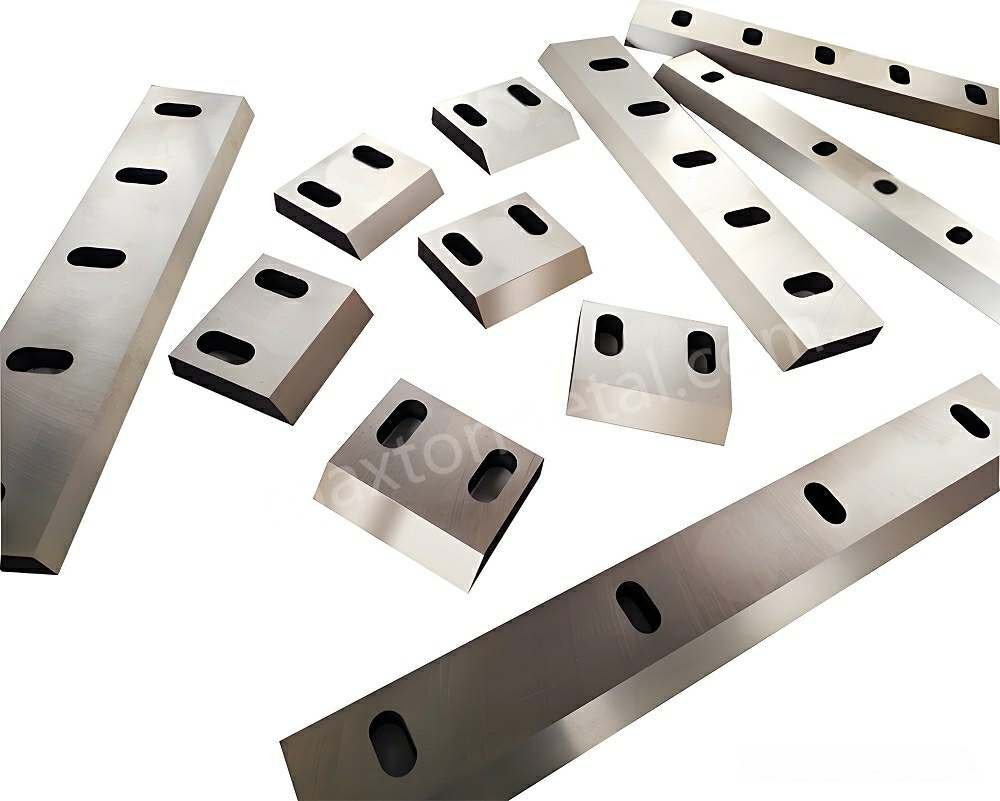
3. علامات تشير إلى ضرورة استبدال الشفرة
إن معرفة الوقت المناسب لاستبدال شفرات كسارة البلاستيك يساعد على تجنب التوقف غير المتوقع وإصلاحات الماكينة المكلفة.
3.1 العلامات الشائعة لتآكل الشفرة
| مؤشر التآكل | ماذا يعني ذلك | حل |
| انخفاض كفاءة القطع | الشفرات غير حادة أو غير متوازنة. | إعادة شحذ أو استبدال الشفرات. |
| حجم المواد الممزقة غير متناسق | تآكل غير متساوٍ للشفرة أو خلوص غير مناسب. | فحص وضبط محاذاة الشفرة. |
| اهتزازات غير عادية | شفرات فضفاضة أو تالفة. | قم بربط البراغي أو استبدال السكاكين التالفة. |
| تراكم الحرارة الزائدة | الاحتكاك الناتج عن الشفرات الباهتة. | تنظيف أو تشحيم أو استبدال الشفرات. |
3.2 العوامل التي تؤثر على عمر الشفرة
هناك مجموعة متنوعة من العوامل التي تؤثر على مدة عمر شفرات الكسارة:
- صلابة المواد البلاستيكية - تسبب المواد البلاستيكية الأكثر صلابة (مثل PC وPET) تآكلًا أسرع.
- ظروف تشغيل الماكينة – يؤدي التقطيع عالي السرعة إلى توليد المزيد من الحرارة والضغط.
- ممارسات الصيانة – تؤدي عمليات التشحيم والفحوصات المنتظمة للمحاذاة إلى إطالة عمر الشفرة.
بيانات الصناعة: تشير الدراسات إلى أن شفرات الكسارة التي يتم صيانتها بانتظام تدوم لمدة أطول بمقدار 30-50% من تلك الموجودة في الآلات المهملة (المصدر: Manufacturing Today، 2023).
3.3 أفضل الممارسات لفحص الشفرات
يساعد جدول الصيانة المنظم على اكتشاف تآكل الشفرة قبل أن يتسبب في حدوث مشكلات كبيرة:
| مهمة التفتيش | تكرار |
| فحص الشفرة المرئية | يوميًا |
| فحص إحكام البراغي ومحاذاتها | أسبوعي |
| تحليل تآكل الشفرة بالكامل | شهريا |
💡 نصيحة احترافية: يساعد الاحتفاظ بسجل لاستبدال الشفرات في تتبع اتجاهات الأداء وتحسين جداول الصيانة.
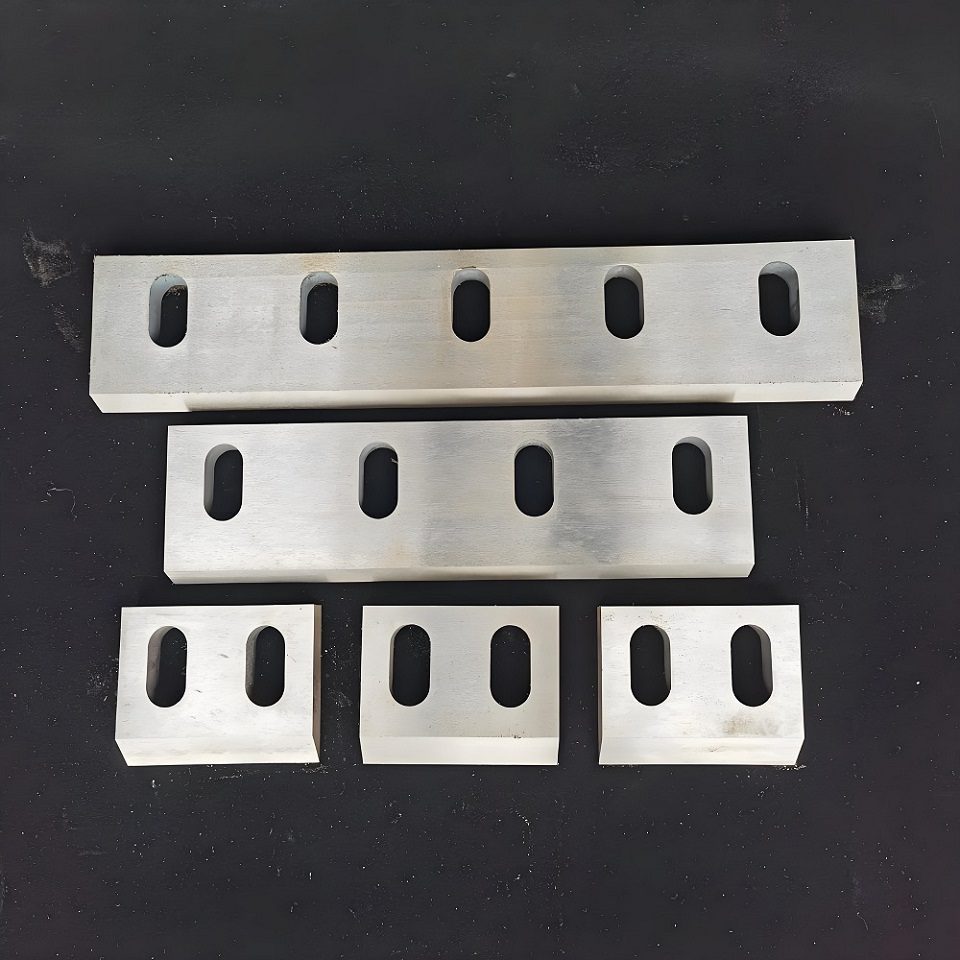
4. دليل استبدال الشفرة خطوة بخطوة
4.1 التحضير لاستبدال الشفرة
التحضير الجيد يقلل من وقت التوقف ويمنع الأخطاء. قبل البدء، اجمع الأدوات ومعدات السلامة اللازمة:
الأدوات والمعدات المطلوبة
| أداة/معدات | غاية |
| قفازات السلامة | حماية اليدين من الحواف الحادة |
| نظارات السلامة | منع دخول الحطام إلى العينين |
| مفتاح عزم الدوران | ضمان شد البراغي بدقة |
| مفاتيح ألين ومفاتيح الربط | إزالة مثبتات الشفرة |
| فرشاة وقطعة قماش للتنظيف | تنظيف سطح تركيب الشفرة |
| مزيل الصدأ ومواد التشحيم | إزالة الصدأ وتسهيل التركيب |
| شفرات بديلة | تأكد من الحجم والنوع الصحيحين |
| مجموعة القفل/التعليق | منع بدء تشغيل الجهاز عن طريق الخطأ |
خطوات التحضير الرئيسية
- التحقق من مواصفات الشفرة - تأكد من أن الشفرات الجديدة تتوافق مع متطلبات الماكينة (الحجم، محاذاة الفتحة، نوع المادة).
- التحقق من مخزون الأجزاء الإضافية - قم بإعداد غسالات وحشوات ومسامير احتياطية في حالة الحاجة إلى استبدالها.
- مسح مساحة العمل - قم بتخزين جميع الأدوات والأجزاء بشكل منظم في منطقة مضاءة جيدًا.
- ارتدِ معدات الحماية الشخصية المناسبة - القفازات والنظارات والملابس الواقية ضرورية.
💡 نصيحة احترافية: احتفظ بقائمة مطبوعة للتحقق من الصيانة في مكان قريب لتتبع كل خطوة.
4.2 إجراءات الإغلاق والقفل الآمن
غالبًا ما تحدث حوادث الآلات نتيجة عدم اتباع إجراءات إيقاف التشغيل الصحيحة. قبل استبدال الشفرات، اتبع خطوات السلامة المهمة التالية:
إجراءات القفل/التعليق (LOTO) خطوة بخطوة
- قم بإيقاف تشغيل الجهاز
- اضغط على زر التوقف في حالات الطوارئ.
- قم بإيقاف تشغيل مفتاح الطاقة الرئيسي.
- افصل مصدر الطاقة
- بالنسبة للكسارات الكهربائية: افصلها عن مصدر الطاقة الرئيسي.
- بالنسبة للأنظمة الهيدروليكية: قم بإيقاف تشغيل النظام وإزالة الضغط منه.
- تطبيق أجهزة القفل/العلامة
- قم بتوصيل جهاز القفل بمفتاح الطاقة الرئيسي.
- ضع ملصقًا لتحذير الآخرين من أن الصيانة جارية.
- التحقق من إيقاف التشغيل
- اضغط على زر البدء للتأكد من عدم تدفق الطاقة.
- انتظر حتى تتوقف جميع الأجزاء المتحركة تمامًا قبل المتابعة.
🚨 تحذير: لا تفترض أبدًا أن الجهاز متوقف عن العمل. تأكد دائمًا قبل العمل عليه.
4.3 الوصول إلى حجرة الشفرة
اعتمادًا على طراز الكسارة، قد يتم وضع الشفرات في حجرة خلف الأغطية الواقية.
خطوات الوصول إلى حجرة الشفرة
- تحديد نقطة الوصول - راجع دليل الجهاز لتحديد موقع حجرة الشفرة.
- قم بإزالة أغطية الأمان أو لوحات الوصول - استخدم مفاتيح الربط المناسبة لإزالة البراغي.
- تأمين المكونات المفكوكة - منع البراغي أو الأغطية من السقوط داخل الجهاز.
- فحص منطقة الشفرة - ابحث عن الحطام وأنماط التآكل ومشاكل المحاذاة قبل المتابعة.
💡 نصيحة احترافية: التقط صورة لإعداد الشفرة الحالي قبل الإزالة للمساعدة في إعادة التثبيت.
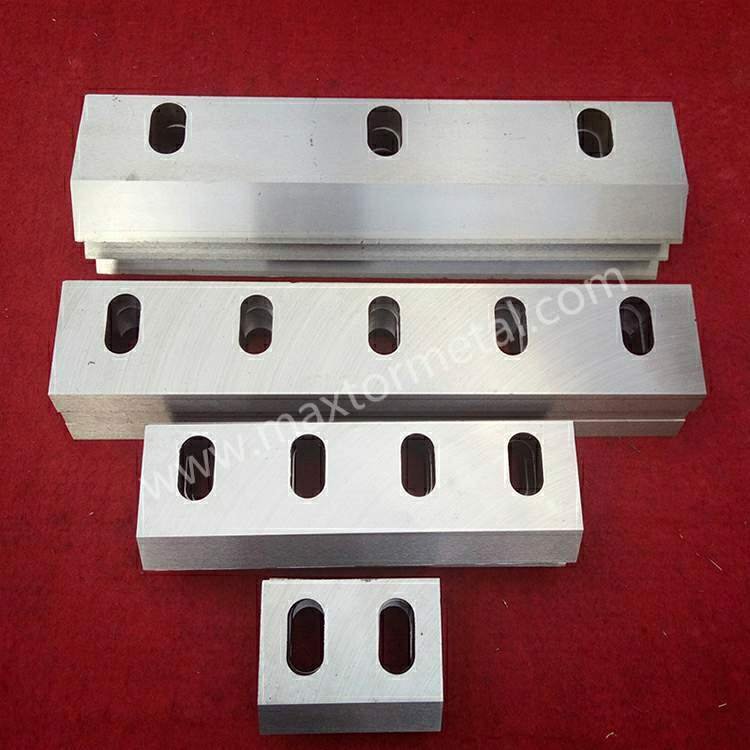
4.4 إزالة الشفرات القديمة
قد يؤدي إزالة الشفرة بشكل غير صحيح إلى إتلاف سطح التركيب، مما يؤدي إلى مشاكل في المحاذاة. اتبع الخطوات التالية بدقة:
إجراء إزالة الشفرة
- قم بفك البراغي بشكل متقاطع لمنع الضغط على الشفرة.
- قم بإزالة الغسالات والحشوات بعناية، مع الحفاظ عليها منظمة لاستخدامها لاحقًا.
- قم بإزالة الشفرات القديمة ببطء، وتجنب الحركات المفاجئة التي قد تسبب الإصابات.
- قم بفحص الشفرات التي تمت إزالتها بحثًا عن أنماط التآكل، وتوثيق الضرر المفرط.
- قم بتنظيف منطقة التثبيت قبل تركيب الشفرات الجديدة.
الأخطاء الشائعة التي يجب تجنبها
❌ استخدام القوة المفرطة - إذا كان البرغي عالقًا، ضع مادة التشحيم بدلاً من إجباره.
❌ سقوط الغسالات أو الحشوات - قد يؤدي فقدان الأجزاء إلى محاذاة غير صحيحة للشفرة.
❌ تخطي التوثيق - سجل دائمًا الملاحظات لتتبع اتجاهات تآكل الشفرة.
4.5 تنظيف وتجهيز سطح التركيب
سطح التركيب النظيف ضروري لاستقرار الشفرة ودقة القطع. حتى الجسيمات الصغيرة قد تسبب عدم محاذاة، مما يزيد من تآكل الشفرة.
خطوات التنظيف
✅ استخدم فرشاة سلكية لإزالة الصدأ والحطام.
✅ امسحي المنطقة بمذيب صناعي لإزالة الشحوم.
✅ افحص الشقوق أو الأسطح غير المستوية التي قد تؤثر على أداء الشفرة.
✅ تأكد من أن جميع الغسالات والحشوات في حالة جيدة؛ واستبدلها إذا لزم الأمر.
💡 نصيحة احترافية: استخدم أداة مستقيمة للتحقق من عدم وجود أي مخالفات على السطح قبل تركيب شفرات جديدة.
4.6 تركيب الشفرات الجديدة
يضمن تركيب الشفرات بشكل صحيح التقطيع بكفاءة ويطيل عمر الماكينة.
عملية التثبيت
- قم بمحاذاة فتحات الشفرة مع سطح التثبيت.
- قم بإدخال الغسالات والحشوات حسب توصيات الشركة المصنعة.
- قم بربط البراغي يدويًا في مكانها قبل التثبيت النهائي.
- تأكد من وجود مسافة متساوية بين الشفرات لتجنب القطع غير المتساوية.
⚠️ مهم: يجب وضع الشفرات في اتجاه الدوران الصحيح لتجنب عدم الكفاءة وتلف الماكينة.
4.7 ربط البراغي بشكل صحيح
يمكن أن يؤدي الربط غير الصحيح إلى تشوه الشفرة أو اهتزازها بشكل مفرط، مما يؤدي إلى التآكل المبكر.
أفضل الممارسات لشد مسامير الشفرة
✅ استخدم مفتاح عزم الدوران - اتبع مواصفات عزم الدوران الخاصة بالشركة المصنعة.
✅ قم بربط البراغي بشكل متقاطع - وهذا يضمن توزيع القوة بالتساوي.
✅ تجنب الإفراط في الربط - فقد يؤدي ذلك إلى إتلاف حواف الشفرة أو التسبب في حدوث شقوق.
✅ أعد فحص عزم الدوران بعد تشغيل الاختبار الأولي - قد تصبح بعض البراغي فضفاضة قليلاً.
💡 نصيحة احترافية: احتفظ بمخطط مواصفات عزم الدوران في متناول يدك للرجوع إليه.
4.8 اختبار التشغيل والتعديلات النهائية
يتم التحقق من عملية التشغيل التجريبي من خلال التثبيت والتأكد من أن الكسارة تعمل بسلاسة.
إجراء تشغيل الاختبار
- أعد تجميع جميع الأغطية والألواح الآمنة.
- أعد توصيل مصدر الطاقة وقم بتشغيل الجهاز.
- قم بتشغيل الكسارة بسرعة منخفضة لمدة 5 إلى 10 دقائق.
- راقب المشكلات التالية:
- اهتزازات غير عادية
- مستويات الضوضاء غير المتساوية
- أداء القطع غير المنتظم
- إذا لزم الأمر، قم بإجراء تعديلات على محاذاة الشفرة.
💡 نصيحة احترافية: اطلب من المشغل مراقبة الأداء أثناء تشغيل الاختبار.
4.9 حفظ سجلات الصيانة
يساعد توثيق كل عملية استبدال للشفرة على تحسين كفاءة الصيانة ويساعد في التنبؤ بالاستبدالات المستقبلية.
ما الذي يجب تضمينه في سجلات الصيانة
📌 تاريخ الاستبدال – تتبع عمر الشفرة.
📌 نوع الشفرة المثبتة - تأكد من الاتساق.
📌 أنماط التآكل الملاحظة - تحديد المشكلات المحتملة في الماكينة.
📌 قيم عزم الدوران المستخدمة - تحقق من التثبيت الصحيح.
📌 الصيانة المجدولة التالية - منع الأعطال غير المتوقعة.
💡 نصيحة احترافية: يستخدم سجلات الصيانة الرقمية لتتبع وتيرة الاستبدال وجدولة الصيانة الوقائية.
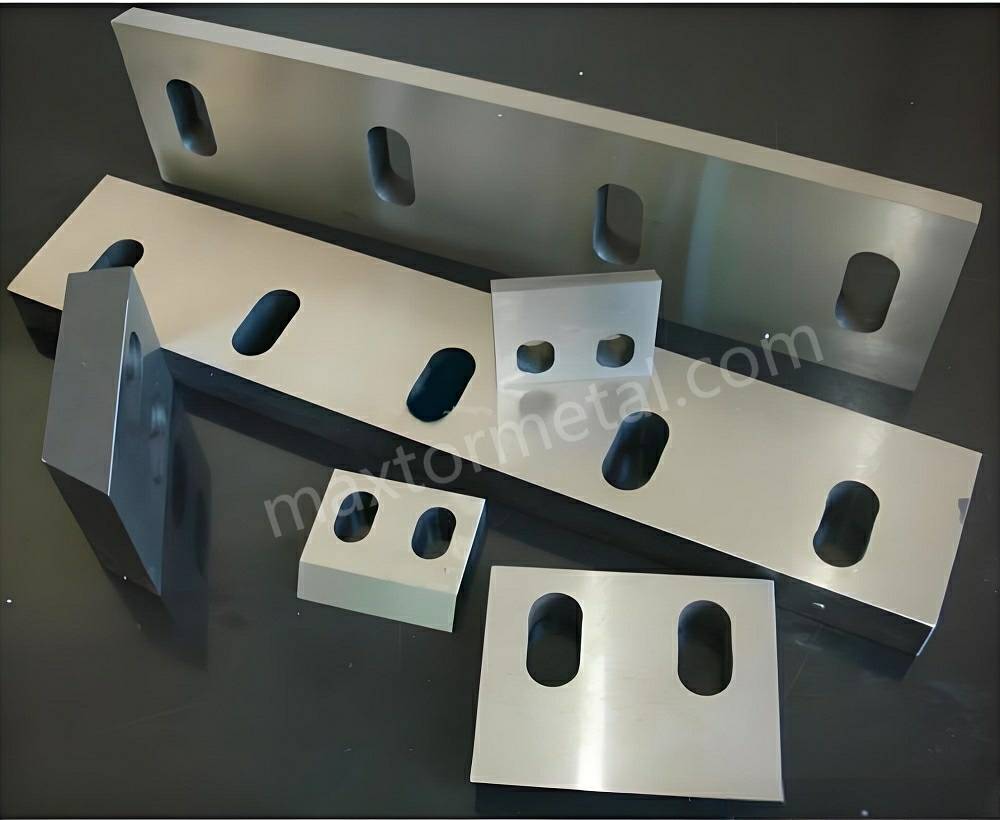
5. خطة الفحص والصيانة الدورية
إن اتباع خطة صيانة منظمة واستباقية لكسارة البلاستيك يمنع التوقف المفاجئ، ويخفض تكاليف التشغيل، ويطيل عمر شفرات كسارة البلاستيك. كما أن تطبيق استراتيجية صيانة وقائية يضمن أداءً ثابتًا في التقطيع، ويقلل من مخاطر السلامة.
تشير الدراسات إلى أن الصيانة المخططة تقلل من وقت تعطل الماكينة بما يصل إلى 45% مقارنة بالصيانة التفاعلية (المصدر: Manufacturing Today، 2023).
5.1 جدول الصيانة الموصى به
يوضح الجدول التالي خطة الصيانة المثالية استنادًا إلى أفضل الممارسات في الصناعة.
| مهمة الصيانة | تكرار | إجراء |
| فحص الشفرة البصرية | يوميًا | ابحث عن التآكل المرئي أو الشقوق أو مشاكل المحاذاة. |
| فحص مسامير الشفرة ومحاذاتها | أسبوعي | تأكد من أن البراغي محكمة وأن الشفرات محاذية بشكل صحيح. |
| تشحيم منطقة تركيب الشفرة | أسبوعي | استخدم مواد التشحيم الصناعية لمنع التآكل. |
| حجرة الشفرة النظيفة | كل أسبوعين | قم بإزالة بقايا البلاستيك والغبار والحطام من الجهاز. |
| مراقبة استهلاك الطاقة | شهريا | تشير طفرات الطاقة المفاجئة إلى بلادة الشفرة أو عدم محاذاتها. |
| شحذ الشفرة أو استبدالها | حسب الحاجة | قم بشحذ الشفرات أو استبدالها عند انخفاض كفاءة القطع. |
| فحص كامل للماكينة | كل 3 أشهر | قم بفحص جميع المكونات والأحزمة والمحامل والتروس بحثًا عن التآكل. |
5.2 قائمة فحص الشفرة
استخدم قائمة التحقق هذه أثناء الصيانة الأسبوعية للتأكد من أن شفرات الكسارة في حالة مثالية:
✅ تبدو حواف الشفرة حادة وخالية من التقطيع
✅ لا توجد علامات للتآكل أو الصدأ
✅ يتم ربط مسامير الشفرة وفقًا لعزم الدوران الموصى به من قبل الشركة المصنعة
✅ لا توجد اهتزازات أو ضوضاء غير طبيعية عند تشغيل الكسارة
✅ يتم ضبط خلوص الشفرة وفقًا لمواصفات الماكينة
5.3 أخطاء الصيانة الشائعة التي يجب تجنبها
❌إهمال عمليات التفتيش الدورية – يؤدي إلى أعطال غير متوقعة.
❌ تجاهل الاهتزازات الطفيفة - يمكن أن يتفاقم سوء المحاذاة المبكرة بمرور الوقت.
❌ تأخير استبدال الشفرات - تؤدي الشفرات البالية إلى زيادة استخدام الطاقة وتقليل جودة القطع.
❌ عدم استخدام مواد التشحيم المناسبة - يمكن أن يؤدي إلى تراكم الصدأ، مما يؤدي إلى سوء المحاذاة.
💡 نصيحة احترافية: تدريب المشغلين على التعرف على علامات التحذير المبكر من تآكل الشفرة لمنع الأضرار المكلفة.

6. الأسئلة الشائعة حول استبدال شفرة كسارة البلاستيك
فيما يلي الأسئلة الشائعة المتعلقة باستبدال شفرة الكسارة وصيانتها، بالإضافة إلى إجابات مفصلة.
6.1 ما هي المدة التي يجب فيها استبدال الشفرات؟
إجابة: يعتمد تكرار الاستبدال على عوامل متعددة، بما في ذلك:
🔹 نوع المادة التي يتم تقطيعها - تتآكل الشفرات البلاستيكية الصلبة بشكل أسرع من البلاستيك اللين.
🔹 تكرار التقطيع - تتطلب العمليات المستمرة ذات الحجم الكبير عمليات استبدال أكثر تكرارًا.
🔹 مادة الشفرة - تدوم شفرات HSS لمدة 3-6 أشهر، بينما يمكن أن تدوم شفرات الكربيد لمدة 6-12 شهرًا مع الصيانة المناسبة.
💡 أفضل الممارسات: تتبع فترات الاستبدال وضبط الجداول الزمنية استنادًا إلى أنماط التآكل الفعلية.
6.2 كيف يمكنني تمديد عمر الشفرة؟
إجابة: قم بتنفيذ الاستراتيجيات التالية لإطالة عمر شفرات الكسارة الخاصة بك:
✅ استخدم مادة الشفرة المناسبة - اختر شفرات الكربيد للمواد الكاشطة وشفرات السبائك للاستخدام العام.
✅ تجنب التحميل الزائد للماكينة - يؤدي تراكم المواد الزائدة إلى زيادة الضغط على الشفرات.
✅ الحفاظ على التزييت المناسب - يمنع الصدأ ويحسن أداء القطع.
✅ اتبع سرعة التقطيع الصحيحة - يؤدي تقليل السرعات الزائدة إلى تقليل التآكل.
✅ تدوير الشفرات وقلبها - إذا كان ذلك ممكنًا، استخدم كلا جانبي الشفرات ذات الحدين قبل استبدالها.
💡 دراسة الحالة: لقد لاحظ أحد المصنعين الذين نفذوا عمليات تفتيش أسبوعية للشفرات زيادة في عمر الشفرة بمقدار 40% من خلال تقليل الأحمال الزائدة للآلات وتحسين ممارسات التشحيم.
6.3 ما الذي يسبب تآكل الشفرة المتكرر؟
إجابة: هناك العديد من العوامل التي تساهم في تآكل الشفرة المتسارع، مشتمل:
❌ تقطيع البلاستيك الكاشط أو المقوى - تؤدي المواد مثل البلاستيك المقوى بالألياف الزجاجية (FRPs) إلى تآكل الشفرات بشكل أسرع.
❌ محاذاة الشفرة غير الصحيحة - تزيد من الاحتكاك وتسبب تآكلًا غير متساوٍ.
❌ ممارسات الصيانة السيئة - تؤدي عمليات التفتيش غير المنتظمة إلى أضرار غير ملحوظة.
❌ السرعة المفرطة للماكينة - تؤدي الدورات العالية في الدقيقة إلى توليد حرارة زائدة وإجهاد، مما يؤدي إلى إتلاف الشفرات قبل الأوان.
💡 حل: قم بإجراء تحليل مادي لتحديد نوع الشفرة المناسب وضبط الإعدادات التشغيلية وفقًا لذلك.
6.4 لماذا لا يعمل الشفرة الجديدة في بعض الأحيان بشكل مثالي في البداية؟
إجابة: قد تواجه الشفرة المثبتة حديثًا عدم كفاءة مبدئية بسبب:
🔹 التركيب غير الصحيح - تؤدي الشفرات غير المحاذية إلى تقليل دقة القطع.
🔹 فترة تشغيل غير كافية - تتطلب بعض الشفرات فترة "تشغيل" قصيرة للوصول إلى الأداء الأقصى.
🔹 إعدادات عزم الدوران غير الصحيحة - قد يؤدي الإفراط في ربط البراغي إلى تشويه الشفرة، بينما يؤدي عدم الربط بشكل كافٍ إلى عدم الاستقرار.
💡 أفضل الممارسات: بعد استبدال الشفرات، قم بإجراء اختبار تشغيل لمدة 10 دقائق بسرعة منخفضة للتأكد من الأداء المناسب.
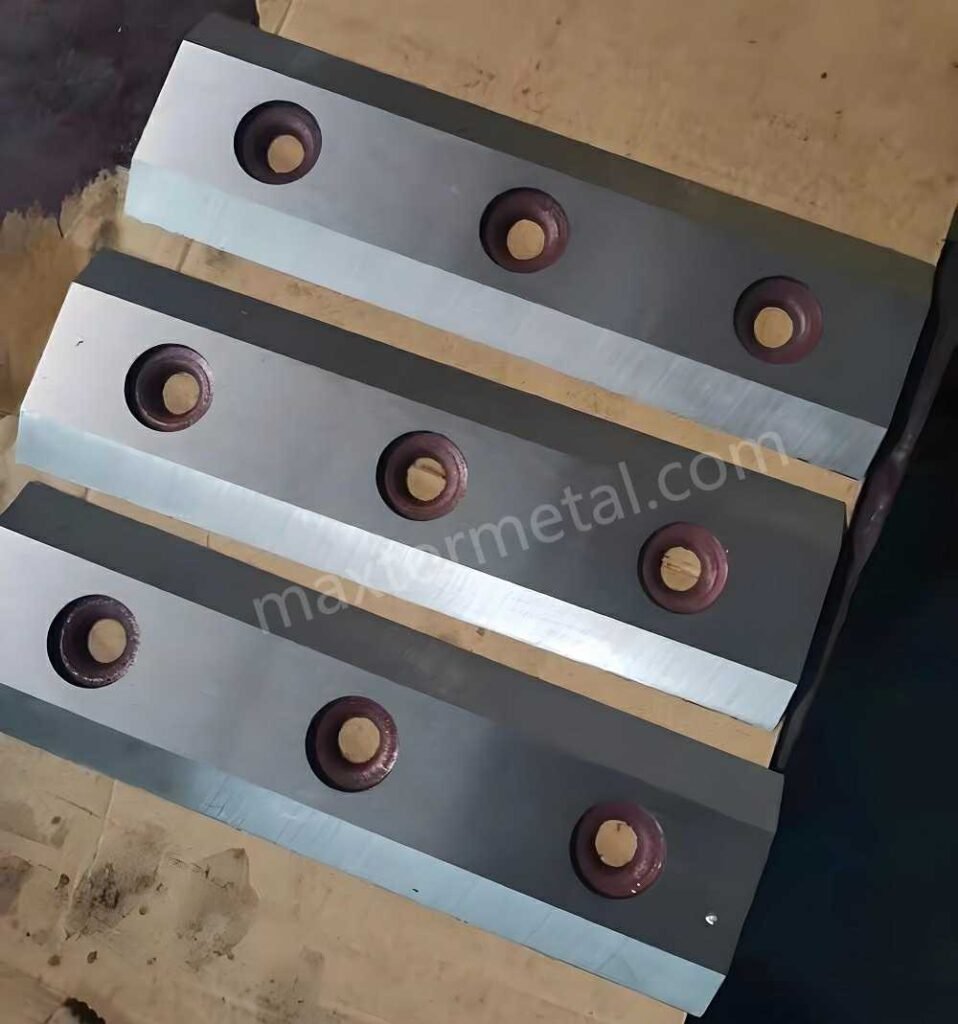
6.5 ما هي علامات التركيب غير الصحيح للشفرة؟
إجابة: إذا لم يتم تثبيت الشفرة بشكل صحيح، فقد تلاحظ ما يلي:
❌ الاهتزاز أو الضوضاء المفرطة - يشير إلى عدم المحاذاة أو البراغي المفكوكة.
❌ حجم غير متساوٍ للمواد الممزقة - يشير إلى وجود مسافة غير مناسبة بين الشفرات.
❌ارتفاع درجة حرارة الشفرة - قد يكون السبب هو الاحتكاك المفرط أو الحواف الباهتة.
❌ التشويش المتكرر - يحدث بسبب اتجاه الشفرة غير الصحيح.
💡 نصيحة احترافية: إذا حدثت هذه المشكلات بعد استبدال الشفرة، فقم بإعادة التحقق من قيم المحاذاة وعزم الدوران على الفور.
6.6 ما هي احتياطات السلامة التي يجب اتباعها أثناء استبدال الشفرة؟
إجابة: لمنع الإصابات وتلف الماكينة، اتبع خطوات السلامة التالية:
✅ قم دائمًا بإيقاف تشغيل الجهاز وقفله/وضع علامة عليه (LOTO) قبل إجراء الصيانة.
✅ ارتدِ قفازات مقاومة للقطع ونظارات أمان للحماية من الحواف الحادة.
✅ استخدم أدوات الرفع المناسبة إذا كانت الشفرات ثقيلة لمنع إصابات الإجهاد.
✅ تأكد من محاذاة الشفرة قبل شد البراغي لتجنب الأعطال التشغيلية.
✅ تأكد من اختبار الماكينة بالكامل قبل استئناف التشغيل الكامل.
💡 بيانات الصناعة: وفقًا لتقارير السلامة في مكان العمل، تحدث 70% من الإصابات المرتبطة بالآلات بسبب إجراءات الصيانة غير السليمة (المصدر: مجلة السلامة والهندسة، 2023).
استبدال شفرات كسارة البلاستيك يضمن الاستخدام الصحيح تقطيعًا فعالًا، وتقليل وقت التوقف، وإطالة عمر الآلة. سيساعدك اتباع هذا الدليل على الحفاظ على الأداء الأمثل مع تقليل تكاليف التشغيل.
🔹 هل تحتاج إلى شفرات صناعية عالية الجودة؟ عروض نانجينغ Metal حلول الشفرة المخصصة مُصممة لتحقيق أقصى قدر من المتانة والأداء.
📩 اتصل بنا اليوم للحصول على استشارة مجانية!



استجابة واحدة